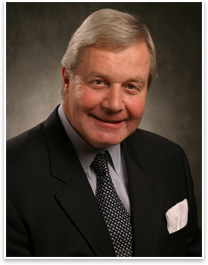
 Denis G. Kuhn, 65, Preservation Architect Denis G. Kuhn, 65, Preservation Architect
Denis G. Kuhn, FAIA, a principal of Ehrenkrantz Eckstut & Kuhn (EE&K), passed away May 10, during a tour of a project site in the Dominican Republic. A pioneer in the field of adaptive reuse and preservation, Kuhn fused old and new as he transformed neglected historic buildings into places of relevance and purpose in the modern city. At EE&K, Kuhn led a wide variety of preservation projects that range in scale from skyscrapers to small pavilions and public parks, including many nationally registered historic landmarks. Kuhn led the oft-noted and awarded restoration of the Beaux-Arts Alexander Hamilton Custom House in Manhattan, designed by Cass Gilbert. He transformed it into the new home for the National Museum of the American Indian and the U.S. Bankruptcy Courts. He took another abandoned Beaux-Arts structure, a former New York Police Department headquarters building by Hoppin and Koen, and turned it into apartments with space for cultural and nonprofit offices. “We never planned on Denis leaving. It was a big shock,” says Stan Eckstut, FAIA, of his long-time friend and business partner. “He was a great collaborator and a great listener.” Eckstut notes that Kuhn perhaps leaned toward preservation at the beginning of his career. However, as his practice evolved, Eckstut says, Kuhn was eager to embrace adaptive reuse, along with other methodology to pursue his projects in rational, innovative, and appropriate ways. “There was no problem he wasn’t interested in solving.” Eckstut recalls. In all of his preservation work, Kuhn emphasized a sustainable approach to design and retaining the greatest amount of historic fabric while perpetuating the useful life of each structure. His goal, his colleagues say, was always to keep his projects relevant and vital, maintaining the old while accommodating the new. Kuhn created Science City at Union Station, Kansas City, Mo., which the firm notes he called “the project of a lifetime.” He also designed the Hollywood and Highland, the Los Angeles entertainment development that includes the Kodak Theater. Colleagues note: “From the Woolworth Building to the Dakota apartments to Bethesda Fountain and the Loeb Boathouse in Central Park, Kuhn ensured the survival of landmark architecture for decades to come.” Accolades and appreciation “His value system carries on in the firm,” Eckstut says. “Being a collaborator and listener meant that he was open to many ideas. There wasn’t a building type he wasn’t interested in.” That openness, focus on project diversity, and quest for innovation and potential helped make EEK more of an ideas practice, as opposed to only a service-oriented business, Eckstut says. “He showed us how to keep cities alive and how to make good neighbors of historic and modern. We are dedicated to continuing his legacy and, through the coming weeks, months, and years, will hold many questions and fewer answers, we know we need only look to the skyline for inspiration,” his colleagues note on the firm Web site. |
||
Copyright 2007 The American Institute of Architects. All rights reserved. Home Page |
||
news headlines
practice
business
design
Photo courtesy Ehrenhrantz Eckstut & Kuhn Architects.
